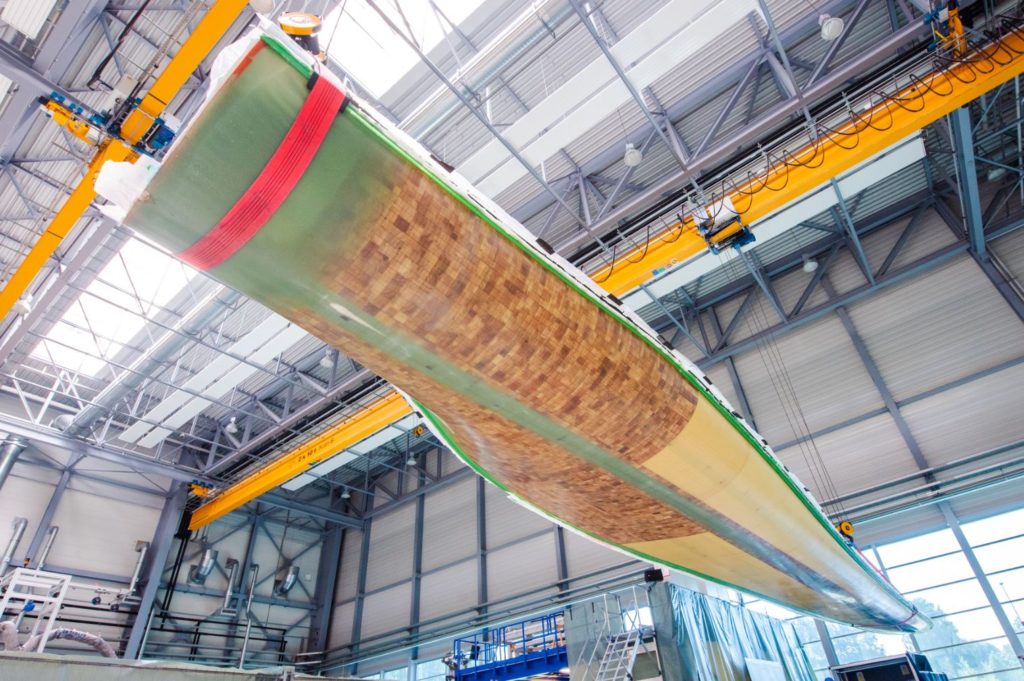In the SmartBlades project, the DLR Institute of Composite Structures and Adaptive Systems studied three technologies for enabling the design and construction of larger rotor blades. Rotor blades equipped with these technologies need to be capable of a) adapting to changing wind conditions, b) withstanding gust loads in different environments, and c) generating more power – while remaining light enough to be technically feasible, transportable and installable. The project demonstrated the potential of using the different technologies for achieving this goal: first, blades that can couple bending and torsion, or twist, for passive morphing; and, second and third, using adaptive trailing edge flaps and leading edge slats, respectively, to influence the aerodynamic behaviour of the blades, functioning in a similar way to high-lift systems on aircraft wings.
The success of SmartBlades showed the potential of the technologies that had been developed, increasing interest from industry and leading to the follow-up project – SmartBlades2. The project partners are currently using their expertise to test and implement the concepts in a new generation of wind generator rotor blades.
From january to april 2019, three newly developed rotor blades of the SmartBlades2 project will be tested by the US National Renewable Energy Laboratory in Colorado/USA on a wind turbine.
The project partners are: DLR, ForWind Hannover, ForWind Oldenburg, Fraunhofer IWES, GE, Henkel, Nordex Acciona, SSB Wind Systems, Senvion, Suzlon and WRD Wobben Research and Development.
DLR webportal release: SmartBlades2 – field measurement campaign on wind turbine in Colorado begins
German Aerospace Center (DLR)
Institute of Composite Structures and Adaptive Systems
Zhuzhell Montano Rejas · E-Mail: zhuzhell.montanorejas@dlr.de · DLR.de
